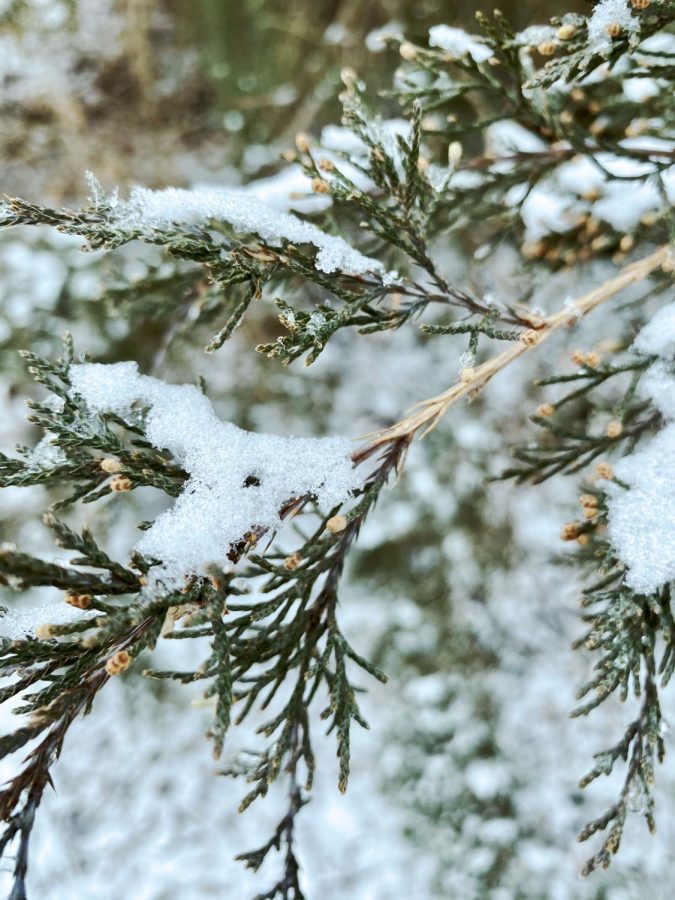Extreme weather wreaks havoc on Middle America
February 19, 2021
Today is Friday, February 19th, and the high is thirty-seven degrees. Normally, this would be considered pretty cold for Kansas. This week, it is the highest temperature by far, thirty degrees higher than Monday’s temperature. Multiple states that make up America’s Heartland experienced record low temperatures this past week and the consequences were felt.
Texas, Oklahoma, and Kansas were the states with the most extreme cold and snow. If you’ve been watching the news, you probably know that at least twenty people have died in Texas, a number reported by Yaron Steinbuch of the New York Post. This is largely due to the state’s poor infrastructure that isn’t equipped to handle such weather. The energy grid failed, resulting in millions of homes without power in the state, causing people to literally freeze to death. The Electric Reliability Council of Texas (ERCOT) is reporting 1.4 million home power outages just in the Houston metro area alone. Deaths are also directly linked to the storm in Missouri, Kentucky, and Louisiana.
Kansas, however, doesn’t have any reported deaths, despite being one of the coldest states in the country. This was mostly due to the fact that this isn’t as rare in occurrence in Kansas- we’re known for sweltering hot summers and freezing cold winters, so our infrastructure was much better equipped than a state like Texas. We also don’t have the sheer population density of a metro area like Houston, so one area failing doesn’t put millions of people without power.
Nonetheless, when temperatures reach as low as negative eight degrees Fahrenheit with a “feels like” negative twenty-six, damages are to be expected. In a Trojournal survey 58 percent of respondents said they lost power, 36 percent lost water, and two respondents reported damages to their vehicles.
Southeast of Saline principal Rhonda Wright noted that although damages may not be permanent, expenses from the storm will be.
“No permanent damage but utilities bills will be very high this month. It was 52 in my house after 2 hours of no electricity. Water pipes had to be thawed twice. I had to leave the water dripping for 4 full days. Who knows how much my water bill will increase. Heating costs are also going to be very high since the furnace is running a lot to try to keep up,” said Wright.
Southeast junior Treyton Sutton also had some unique difficulties. “Our lagoon completely froze up for the first time (we’ve lived there since 2009), causing all of the water in our house to back up,” he said.
Despite the record low temperatures, this winter as a whole has been very above average in temperature, a trend that looks to continue with climate instability. In fact, with the way climate instability affects the polar vortex, these severe winter storms will likely continue happening more often in the future, according to NOAA. This is due to a “wavy” instead of a “stable” polar vortex, which carries cold air, and a “weak” instead of a “strong” jet stream, which carries warm air. The wavy vortex descends south, carrying cold polar air, which collides with the warm jet stream that is pushed northwards. This causes extreme weather conditions in the cold areas and is also why places like the northeast United States and Britain are in the upper thirties this week, which is unusually warm for this time of year, according to The Economist.
The good news is that due to advanced meteorology technology, these storms can often be predicted ahead of time, giving us time to prepare. As extreme weather becomes more common, it will be crucial to improve the United States crippling infrastructure, which overall has a D+ score from the American Society of Civil Engineers. Kansas scores slightly higher than the national average, with a C grade.
If we can do this, hopefully, we can spare Texas a whole lot of trouble, save Ms. Wright some money, and stop Treyton’s sewer from freezing over again in the future.







